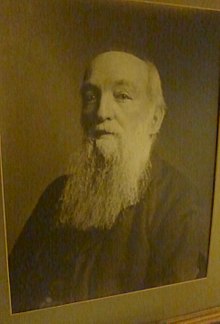John Robert Mortimer
| John Robert Mortimer | |
|---|---|
 |
|
| Born | 15 June 1825 |
| Died | 19 August 1911 (aged 86) |
| Occupation | Corn chandler |
| Known for | Archaeological excavations and museum |
John Robert Mortimer (15 June 1825 – 19 August 1911) was an English corn-merchant and archaeologist who lived in Driffield, East Riding of Yorkshire.
He was responsible for the excavation of many of the notable barrows in the Yorkshire Wolds, including Duggleby Howe, recorded in the work Forty Years Researches in British and Saxon Burial Mounds of East Yorkshire.
He established a dedicated museum of archaeology at Driffield, one of the first of its kind. His excavations represent early examples of the application of scientific methods to the study of burial mounds; his written work and excavated finds remain a valuable resource in British archaeology.
John Robert Mortimer was born at Fimber in the Yorkshire Wolds on 15 June 1825, the eldest of three children of a local farmer; he received a village school education at Fridaythorpe. In adult life he operated as a corn merchant, moving to the nearby larger town of Driffield in 1869; in the same year marrying Matilda née Mitchell, daughter of the vicar of Sancton and of Holme on the Wolds. His business included trade in seed, manure and fertiliser, and included malt kilns and a brewery as assets.
Mortimer's interest was stimulated by visits to the 1851 Great Exhibition, and the geological and archaeological exhibits in the British Museum, and by the private collection of Edward Tindall of Bridlington. Together with his brother Robert, Mortimer assembled a small collection of fossil and antiquarian specimens; they also trained and instructed many local farm workers to collect any likely specimens they found; locally such artefacts became known colloquially as 'Mortmers'. During the latter part of the 19th century the area became a magnet for collectors, in part due to publicity from his collection; most sought ancient stone, flint and bronze weapons. Competition arose for these artefacts, causing a rise in their monetary value. Through their contacts with local agricultural workers the Mortimers were able to collect a great many thousands of specimens.
...
Wikipedia
